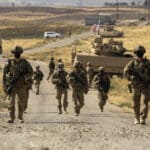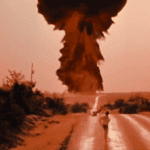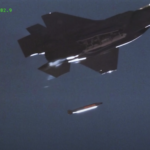Who should manage the nuclear weapons complex?
By Robert Alvarez | December 21, 2012
As the lame-duck Congress wraps up business, a serious debate is unfolding over the future of the US nuclear weapons complex. For the first time since the end of World War II, the long-held policy that places control of the design and production of nuclear weapons in civilian hands may be up for grabs. At issue: What is to be done with the National Nuclear Security Administration (NNSA), now located inside the US Department of Energy?
Created by Congress in 1999, the NNSA was granted semi-autonomous status within the Energy Department, with its own separate bureaucracy, in the hope that this structure would provide the agency the freedom to fix lapses in security at the national weapons labs. The agency is responsible for the maintenance and modernization of the US nuclear warhead stockpile, the operation of research laboratories and nuclear and non-nuclear weapons production sites, and the management of nuclear non-proliferation activities and naval reactors.
Management of the labs had come into question after members of Congress concluded — wrongly, as it turned out — that secrets on the US hydrogen bomb program had been passed on to China by a Los Alamos employee. But there were a host of other security, safety, and financial problems at the labs, and the agency's chief sponsor, then-US Senator Pete Domenici, reasoned that "this new agency provided an opportunity to significantly improve the management of security, as well as all other areas, in the [Energy] Department."
After that, however, the safety and security situation in the nation's nuclear weapons complex grew worse, not better.
At the end of 2011, the Energy Department's inspector general found that NNSA management was fundamentally broken, consisting of "a costly set of distinctly separate … operations that often duplicate existing [Energy Department] functions." The inspector general urged the government to establish a process to close and consolidate Energy Department labs, similar to the method by which the Defense Base Realignment and Closure Commission has decommissioned hundreds of military bases since the late 1980s.
But directors of the weapons labs — and, until his retirement in 2008, Domenici himself — argued that outside meddling was the main problem, and the Energy Department should have less responsibility for overseeing the safety, security, and financial matters of the NNSA. And, in the summer of 2012, the House Armed Services Committee adopted this same view, passing legislation that would eliminate DOE oversight and enforcement of safety, security and financial requirements, grant unprecedented governmental oversight of budgets and nuclear arms policies to the contractors that run the Los Alamos, Sandia, and Lawrence Livermore national laboratories, diminish decades-old standards for nuclear safety; and weaken the Defense Nuclear Facility Safety Board, established by Congress in 1988 as an independent overseer of nuclear safety.
The modern-day security equation. Part of the fiscal 2013 defense authorization bill, the House legislation would restore the Cold War management system known as "least interference," which largely shifts the burden of safety, security, and financial compliance from the Energy Department to the contractors that perform most of the department's work. The Government Accountability Office (GAO) describes least interference as "an undocumented policy of blind faith in [government] contractors' performance." It's not without good reason that the NNSA remains prominent on GAO's list of "high risk" federal programs that are vulnerable to waste, fraud, and abuse.
The attempt to move the National Nuclear Security Administration out of the Energy Department and insulate the national labs from outside oversight was stalled in an unusual way this summer: Peace activists, including an 82-year-old nun, penetrated the Y-12 National Security Complex in Oak Ridge, Tennessee, which stores hundreds of tons of highly enriched uranium. Since then, the Senate has rejected the House's language on oversight of the weapons complex and has agreed to a provision that would create a commission to study how and where the complex should be managed.
One of the options on the table appears to be a transfer of the NNSA to the Defense Department, a shift that the Obama administration entertained in the past. For the first time since 1946, this possibility reopens a debate about whether the nation's nuclear weapons production and maintenance complex should be under civilian or military control. It's anything but a trivial debate. Many of the scientists who founded the Bulletin of the Atomic Scientists argued ardently for civilian control in the wake of Hiroshima and Nagasaki — and they won. The scientists contended that atomic energy was too destructive and important to leave in the hands of the military. The secrecy inherent to the military, the scientists felt, would thwart scientific discovery and prove to be a major obstacle to international control and cooperation.
The question to be decided now is whether, some 65 years and a long Cold War later, the security equation has changed in a way that requires a new arrangement for overseeing the complex that stores and maintains the United States' nuclear weapons.
The struggle for control of the weapons complex. For 50 years, the national laboratories and other facilities that design and maintain the US nuclear weapons stockpile enjoyed an elite national security status. But with the end of the Cold War, the design and the production of new nuclear weapons stopped, and dysfunction in the complex has increased as the NNSA struggled to keep the country's largest and most hazardous government-owned enterprise operating efficiently and securely.
Even after closing many major nuclear material production sites, the NNSA continues to preside over an antiquated infrastructure of weapons labs and other nuclear facilities that cost more than $500 million per year to maintain and repair. The Y-12 complex, for example, stopped production of nuclear weapons decades ago. Yet its annual budgets have more than doubled in order to maintain antiquated, oversized facilities that now handle a small number of weapons parts, store growing amounts highly enriched uranium from dismantled weapons, and process a large backlog of unstable HEU compounds. (Y-12's most notable recent achievement was to put an end to storing hundreds of tons of highly enriched uranium in a 66-year-old wooden building, 14 years after the Energy Department acknowledged its vulnerability to a major fire.)
For nearly 25 years, the government has tried to shrink the NNSA's footprint even as the agency was trying to build replacement facilities to fabricate nuclear weapons components and process excess plutonium for power reactors. These one-of-a-kind, high-hazard facilities have been plagued by delay and skyrocketing costs. A skilled workforce retiring in droves has not helped the downsizing and modernization effort.
Over the decades, the national laboratories – semi-autonomous, contractor-run components of the nuclear complex — have not been shy about attempting to remain free of outside control. Lobbying by the nuclear weapons labs has gone largely unchecked; a White House official recently described the labs to me as being among "the biggest rogue elements in the US government." In 2009, for example, directors of the three labs overseen by the NNSA — Sandia, Los Alamos and Lawrence Livermore — personally lobbied the White House to push for higher funding levels.
The administration subsequently announced plans to increase Energy Department nuclear weapons spending to nearly 70 percent above Cold War levels. Over the next 20 years, the NNSA informed Congress in 2011, the agency plans to spend more than $250 billion to maintain the US nuclear weapons stockpile and refurbish the weapons research and production complex. As the "fiscal cliff" looms, however, the Obama administration is trying to put on the financial brakes, threatening a veto that would block funding for a new plutonium-component manufacturing facility at Los Alamos. However, the House and Senate conferees have defied the president and authorized $3.7 billion for this facility. They also gave the weapons labs carte blanche to bypass the Energy Secretary in formulating the Nuclear Posture Review for the Obama administration – the nation's policy guidance for nuclear weapons.
It is not just the lab directors who have worked to loosen oversight of the NNSA and the labs.
In November 2009, Energy Secretary Steven Chu, a former national laboratory director, opposed a Defense Nuclear Facility Safety Board recommendation requiring contractors to comply with Energy Department safety requirements. This was the first time the department had spurned a safety recommendation in the 20-year history of the nuclear facility safety board. It also marked an extremely unusual position for Chu to take: In effect, the head of the Energy Department was arguing against his department's safety requirements at the national laboratories, which are run by outside contractors. Chu balked at the safety board recommendation because an Energy Department safety assessment for earthquake risks at a decades-old plutonium facility at Los Alamos indicated that it needed expensive upgrading due to its potentially extreme radiological hazards — even as the Energy Department was trying to build its replacement, now estimated to cost almost $6 billion.
Following Chu's lead, Deputy Energy Secretary Daniel B. Poneman issued a directive in March 2010, allowing weapons contractors the flexibility to tailor their own safety and security programs. Shortly thereafter, safety board vice chairman John E. Mansfield wrote to Poneman, declaring that the directive "undermines the principles of providing adequate protection of the public, workers, and the environment from DOE's defense nuclear facility operations."
Although Poneman subsequently backed away from his directive, Chu refused to budge in his opposition to the board's recommendation. By law, the dispute had to be sent to congressional Armed Services Committees, where the complex safety and engineering judgments involved were refereed in a highly politicized environment. In effect, Chu gave Ohio Representative Mike Turner, chairman of the House Armed Services Strategic Forces Subcommittee, a platform to end Energy Department oversight of the nation's nuclear weapons facilities.
Days after the House committee voted to support these drastic changes, the White House, alerted by unions representing Energy Department workers, opposed the provisions, saying they "severely hamper external, independent oversight … require a weaker standard of contractor governance, management, and oversight, and eliminate DOE's flexibility to determine the appropriate means of assessing the unique risks that it confronts in its facilities."
Despite White House opposition, Turner prevailed, and the Republican leadership rammed the bill through the House in May, blocking all relevant amendments and floor debate.
Who should oversee the weapons complex? The effort to move the NNSA out of the Energy Department and greatly diminish outside oversight of national labs and other parts of the weapons development complex came off the tracks late in July, when three peace activists, including an 82-year-old nun, got past multiple barriers and trained snipers guarding a facility that stores hundreds of tons of highly enriched uranium at the Y-12 National Security Complex. The Energy Department and the National Nuclear Security Administration had been made aware of contractor security deficiencies at Y-12 two years earlier, but did not fix them.
At a House Energy and Commerce Committee hearing in September, Texas Representative Joe Barton asked the nun, Megan Rice, who was seated in the audience, to stand. "That young lady there brought a holy Bible (to the plant)," Barton said. "If she had been a terrorist, the lord only knows what could have happened."
With the myth of contractor competence punctured, the Senate passed a resolution rejecting the House provisions to end Energy's oversight and also has agreed to an amendment, sponsored by senators Jon Kyl and Tom Udall, that would create a panel to make recommendations on how the weapons complex should be managed, and by what agency. Congress is expected to take action on the defense authorization bill before it adjourns on December 24; the final version of the bill includes this advisory panel, which is to make an interim report in six months and a final report by February 2014.
Among the many possibilities to be considered on this panel is the transfer of the NNSA to the Defense Department. Shortly after President Obama took office, the White House initiated a process to consider such a shift. The New York Times editorialized in favor of the move, but stiff public opposition from the nuclear weapons labs and congressional supporters led the White House to shelve the effort. But now it's likely being dusted off.
In 1946, scientists — including many who founded the Bulletin of the Atomic Scientists — banded together in a major political effort to prevent the military from maintaining its control over atomic energy. Before the atomic bombs were dropped on Japan, prominent scientists sought to warn President Truman of the consequences of nuclear weapons use, including a nuclear arms race that threatened humanity. They carried their concerns into the congressional debate over the post-war development and control over atomic energy, helping to convince Congress to pass the 1946 Atomic Energy Act that created the civilian Atomic Energy Commission.
But decades have passed since the end of the Cold War, and nuclear weapons no longer hold the high status they once did, particularly in a US military establishment facing an era of budget austerity. The continuing battle over management of the nation's aging and bloated nuclear weapons complex raises a series of serious questions: Will putting the National Nuclear Security Administration in the Defense Department have a streamlining effect, forcing the nuclear weapons program to compete with higher priorities, such as readiness and personnel? Or will putting the weapons research, production, and maintenance complex under Pentagon control open the way to ever-higher spending on the weapons complex, and even less oversight of its safety and security? Would the weapons complex facilities now owned by the Energy Department actually be transferred to Pentagon control? Would the Defense Department even want the facilities, many of which include large amounts of nuclear waste and radioactively contaminated property in need of extraordinarily expensive remediation?
How this will play out is not clear. But prospects have improved for creation of a congressional commission that would make recommendations on the National Nuclear Security Administration's future, and the door appears to be opening, for the first time in more than two generations, for a public debate about the institutional fate of nuclear weapons in the United States. It's a debate worth having. The disposition of the NNSA is more than a bureaucratic turf battle; it could well determine the future size and scope of the US nuclear arsenal. Given that military nuclear spending now dominates the Energy Department budget, a shift in management of the weapons complex may also allow that department the first real opportunity, since it was created in 1977, to focus on its original mission: The ushering in of a new energy future for the United States.
Together, we make the world safer.
The Bulletin elevates expert voices above the noise. But as an independent nonprofit organization, our operations depend on the support of readers like you. Help us continue to deliver quality journalism that holds leaders accountable. Your support of our work at any level is important. In return, we promise our coverage will be understandable, influential, vigilant, solution-oriented, and fair-minded. Together we can make a difference.
Topics: Analysis















